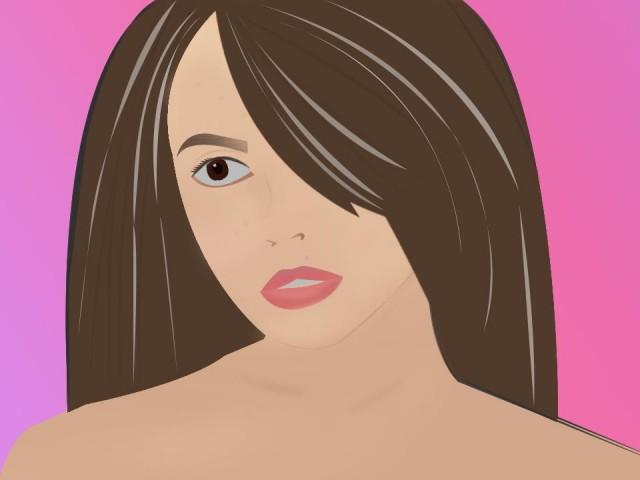Why do I have so much white hair all of a sudden?
Aging may not be the most glamorous thing in the world, but you can take comfort in the fact that everyone goes through it. Eventually everyone worries about wrinkles, sagging skin, and white or gray hair. All of these are a natural part of aging, so that thought should help soften the blow when you find that first strand of white hair.
White or gray hair is the result of the progressive loss of melanocytes — the cells that give color to our skin and hair — from the hair follicles as we age, explains Claudine Yap Silva, MD, FPDS, assistant head of the Hair Unit Department of Dermatology at St. Luke's Medical Center Global City.
Melanocytes, according to Mae Ramirez-Quizon, MD, FPDS, a dermatologist at St. Luke’s Medical City in BGC specializing in hair and nail disorders, are cells in the bulb of the hair follicle that produce melanin, the actual pigment responsible for giving our hair its color.
“As we get older, melanocytes in our hair follicles gradually die. As they become fewer, less melanin is present, and the hair strand associated with that follicle also appears more and more transparent—gray, silver, or white in decreasing order of melanin content,” she continues.

Maria Rica S. Mallari, M.D., head of the Hair Unit of the Dermatology Center at St. Luke's Medical Center, points out that apart from aging, other causes of white or gray hair include genetics, stress, lack of nutrients, and autoimmune disorders.
So if your parents developed white hair early, chances are you are prone to premature graying, too.
Premature graying is defined as getting gray hair in your 20s and 30s. Mallari says that there are even some people who develop white hair in their childhood due to genetics.
“Others may have more white hair because of stress, which results in decrease in cell functioning and nutrients in the follicle,” she continues. Yap-Silva agrees, “Some studies show that stress hormones can cause melanocytes to migrate from the hair follicle thus causing grey hairs.”
In fact if you’ve ever noticed you get significantly more gray hairs during a period of stress, it’s because “stressful events may cause oxidative stress in the cells. [When this happens,] the free radicals in the body that damage cells cannot be counteracted by the antioxidants present. Stress may therefore cause aging of the hair follicle, decrease in its pigment formation, and even result in hair loss," Mallari says.
What’s more, you’ve probably noticed that when the period of stress is over, the gray hairs are no longer as numerous or as noticeable. “Once the stressful event is over and nutrients are taken in, the body slowly recovers, and the hair follicle start to produce pigment again,” Mallari remarks.
Premature graying could also be due to higher oxidative damage to the melanocytes by high amounts of pro-oxidant substances in the hair follicle, Ramirez-Quizon points out. “Oxidative damage is hypothesized to come from ultraviolet (UV) rays, pollution, emotional factors, or inflammatory causes.”
And smoking. She notes that smoking is significantly correlated with premature graying, thanks to its pro-oxidant effect on hair follicle melanocytes. As Mallari puts it, smoking can cause decrease in cell function which in turn decreases pigment cell production in hair follicles.
Ramirez-Quizon observes that vitamin deficiency, particularly Vitamin B12 deficiency, has been shown to cause graying, too, as well as deficiencies in copper, iron, calcium, and zinc. And although supplements can reverse the deficiencies, it’s not clear if they reverse premature graying, she continues. It’s worth noting though that Yap-Silva and Mallari agree that supplements may be able to help.
As for the Pinoy belief that plucking white hair will make it proliferate, it’s an old wives’ tale, according to Ramirez-Quizon. Yap-Silva suggests that what actually happens is, when people pluck their white hairs, they all start growing at the same time, so it looks like the white hairs “multiplied.”
Or, you really are just getting older: “It’s possible that after a while — as it is a physiologic and normal process — new white hairs will grow making it seem that the white hairs increased in number,” notes Yap-Silva.
Another popular Pinoy myth is that tying your hair while it’s still wet can lead to graying. It’s not true, but Mallari advises against it nonetheless, since it leads to hair damage. “Wet hair is more prone to hair breakage. When it’s tied, the cuticle exposes the fibers, leading to breakage,” she shares.
So what can you do when you start going gray? You can embrace it, for one.
Recently, there has been a growing gray-hair revolution. Women are starting to own their white hair in big and beautiful ways. But if you’re not yet ready to take up arms in this revolution, there are a few things you can try.
Mallari recommends eating healthy, “from all basic food groups: meat, seafood, fruits, vegetables. [And] if you’re on a diet, take supplements with zinc, iron, vitamin B, biotin, and copper.” Generally she advocates a healthy, stress-free and smoke-free lifestyle.
According to Ramirez-Quizon, there are shampoos that contain topical antioxidants such as vitamin C and E, but since they’re unlikely to be absorbed into the skin because of the short contact time, they may not affect hair pigmentation. “Other topical anti-aging products such as green tea extracts, selenium, copper, phytoestrogens, and melatonin hold theoretical promise but whether these translate to observable real-life changes are unclear,” she adds.
Special delivery systems called liposomes that aim to deliver melanin into hair follicles are being developed but are still in the initial stages, Ramirez-Quizon reveals. So far, after nutritional supplementation, she admits hair dyeing is still your best bet in managing white hair. Mallari, though, cautions against using chemical hair dyes with peroxides or bleaching agents, since they may end up doing the opposite and lead to premature hair graying instead. — LA, GMA News




